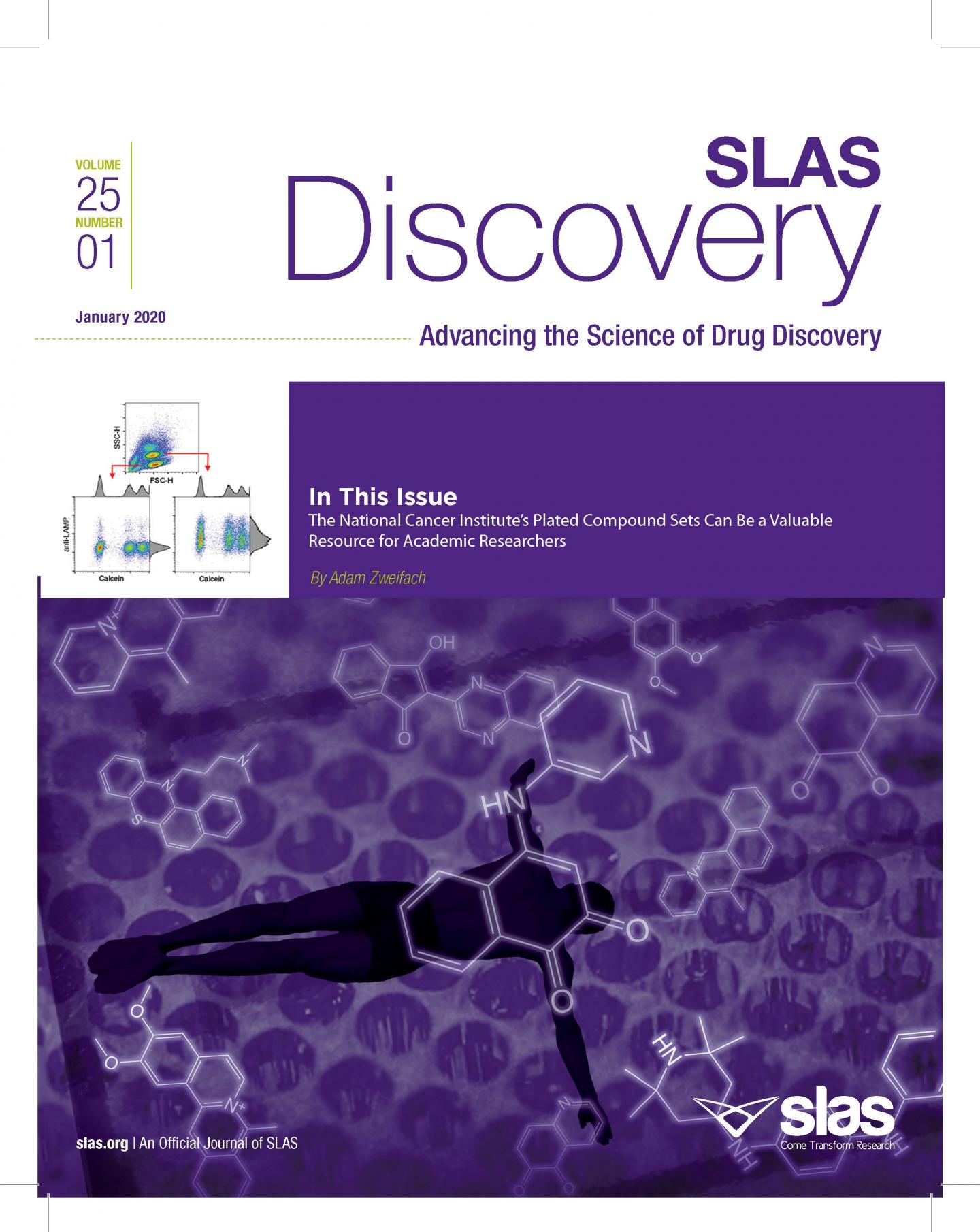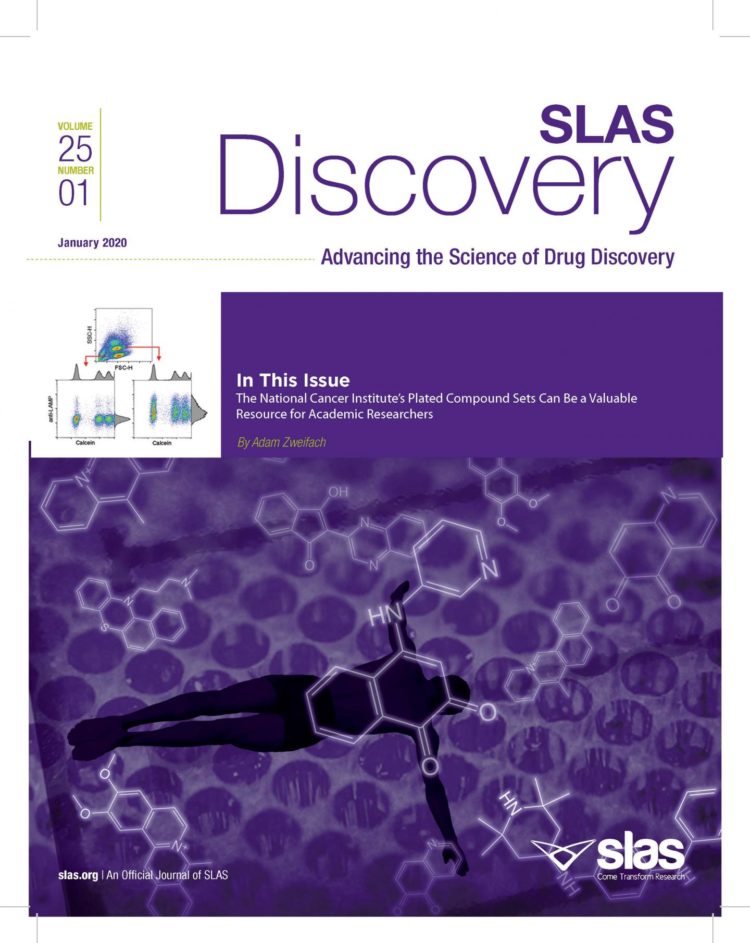Featured article, ‘The National Cancer Institute’s Plated Compound Sets Can Be a Valuable Resource for Academic Researchers,’ now available

Credit: David James Group
Oak Brook, IL – January’s edition of SLAS Discovery features an analysis of two plated sets of synthetic compounds available from the National Cancer Institute (NCI), and the author’s positive and negative results of using this type of collection in his lab’s research.
Adam Zweifach, Ph.D., (The University of Connecticut) points out that NCI’s compound collections are a valuable resource for academic scientists interested in assay development and drug discovery. The benefits, he concludes, are that the compounds provided were at a convenient size to screen manually; available at minimal (if any) cost; their property and activity data is readily available online, and acquiring a re-supply is easy and convenient.
However, he also noted that the collections did have a significant drawback: they can contain a large number of compounds that are pan assay interfering and nonspecific (PAINS), or contain other chemical liabilities revealed by tools like the rapid elimination of swill (REOS) software filters. This means that screening them is likely to generate hits in many assays; this is good, because it allows researchers to validate their assays and post-screening workflows, but also bad because the hits are unlikely to be attractive leads.
To solve this problem, Zweifach suggests that the NCI create a collection of 10,000 carefully selected lead-like compounds pooled into 1000 wells, which may help with the generation of more attractive hits in most assays. He believes that creating this kind of collection would exponentially help advance academic drug discovery efforts and efficiency.
Zweifach received his doctorate in physiology from Yale University and completed his postdoctoral fellowship at Stanford University. He then established his own lab in the Department of Physiology and Biophysics at the University of Colorado Health Sciences Center before moving to the Department of Molecular and Cell Biology at the University of Connecticut. Here, he became interested in phenotypic screening and has since focused on using high-throughput flow cytometry to discover immunologically active small molecules and on developing ways to use intramolecular FRET sensors based on fluorescent protein pairs for screening.
###
Access to January’s SLAS Discovery issue is available at https:/
SLAS (Society for Laboratory Automation and Screening) is an international community of 16,000 professionals and students dedicated to life sciences discovery and technology. The SLAS mission is to bring together researchers in academia, industry and government to advance life sciences discovery and technology via education, knowledge exchange and global community building.
SLAS Discovery: Advancing the Science of Drug Discovery, 2018 Impact Factor 2.192. Editor-in-Chief Robert M. Campbell, Ph.D., Eli Lilly and Company, Indianapolis, IN (USA).
SLAS Technology: Translating Life Sciences Innovation, 2018 Impact Factor 2.048. Editor-in-Chief Edward Kai-Hua Chow, Ph.D., National University of Singapore (Singapore).
Media Contact
Jill Hronek
[email protected]
630-256-7527
Related Journal Article
http://dx.





